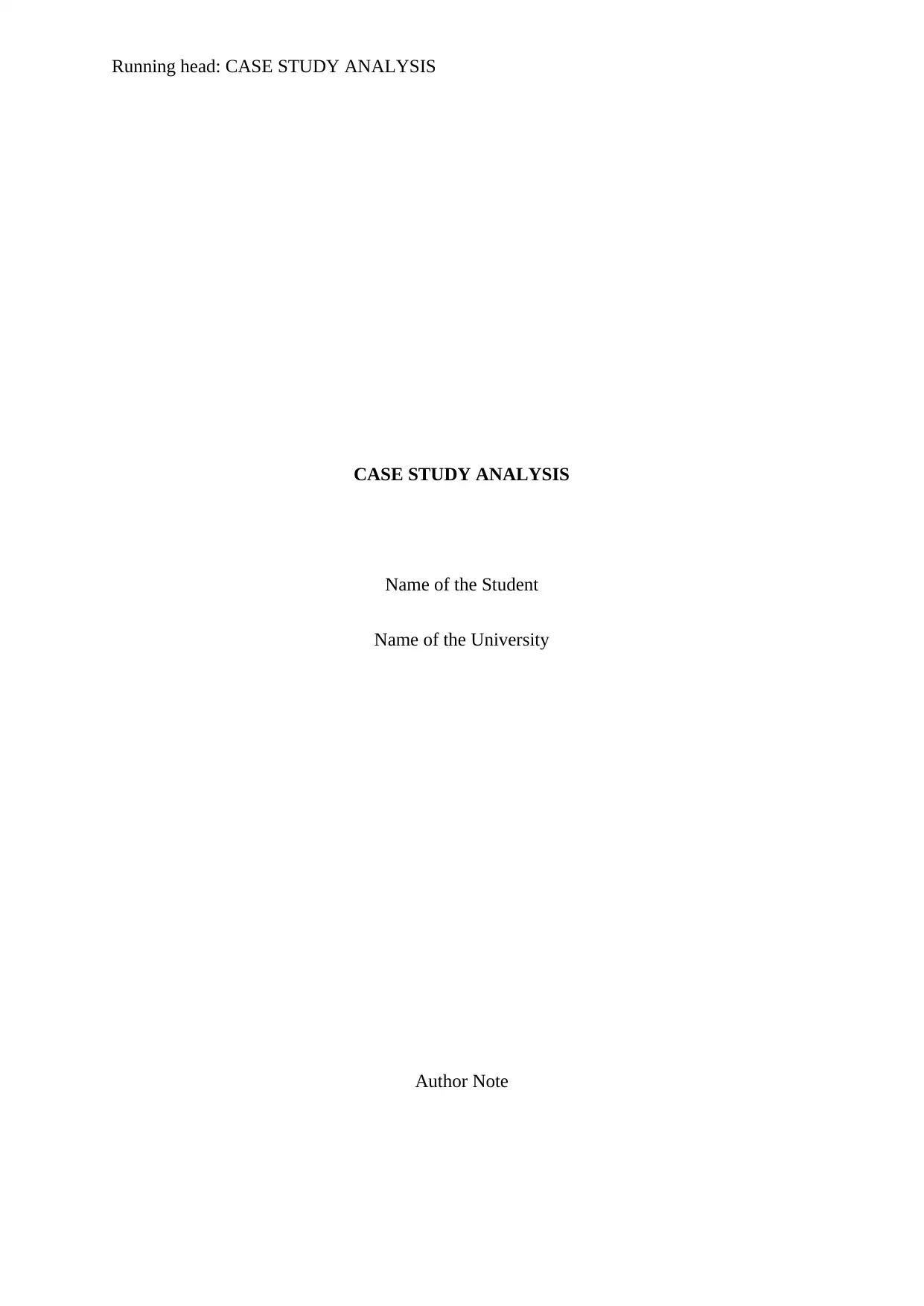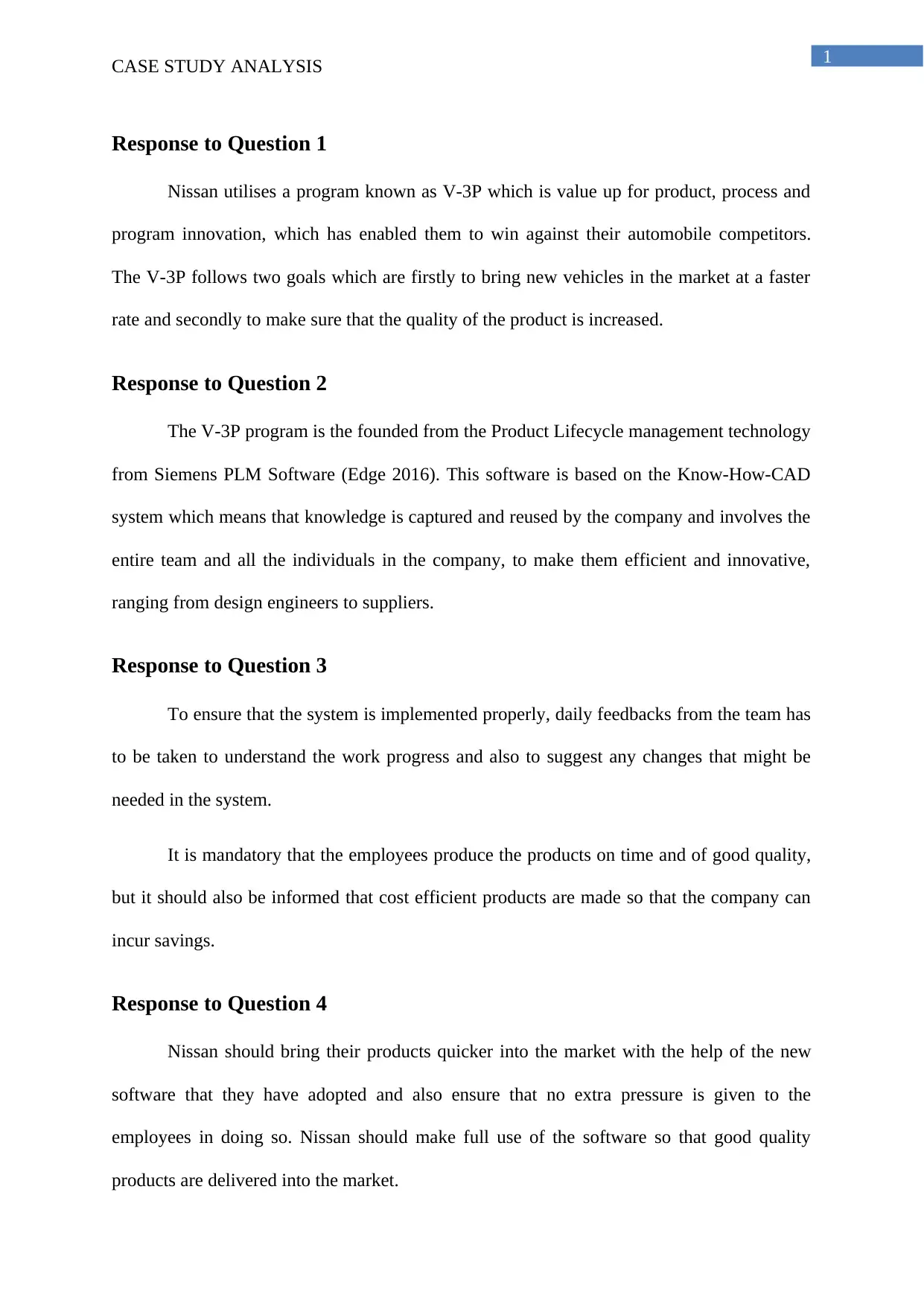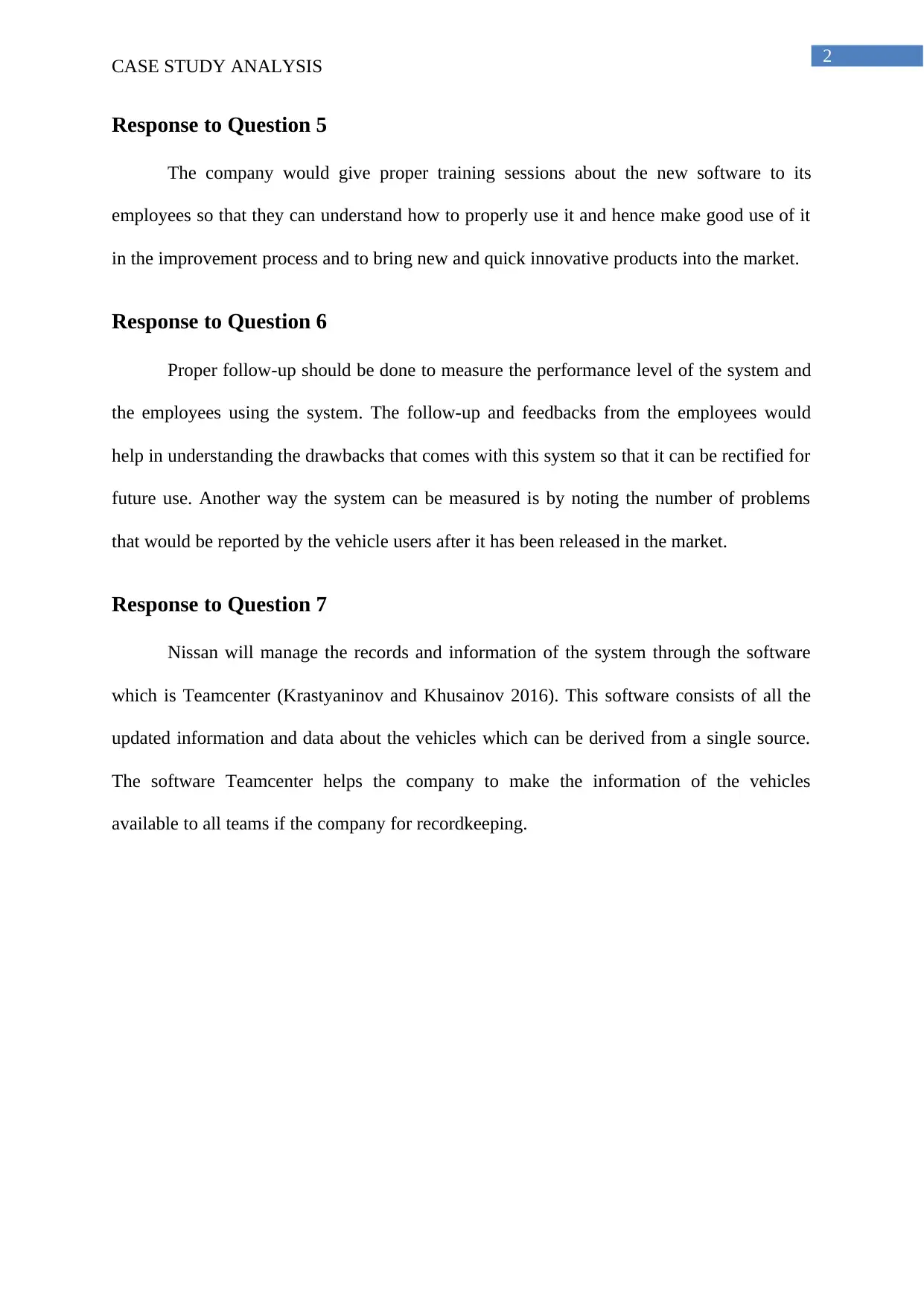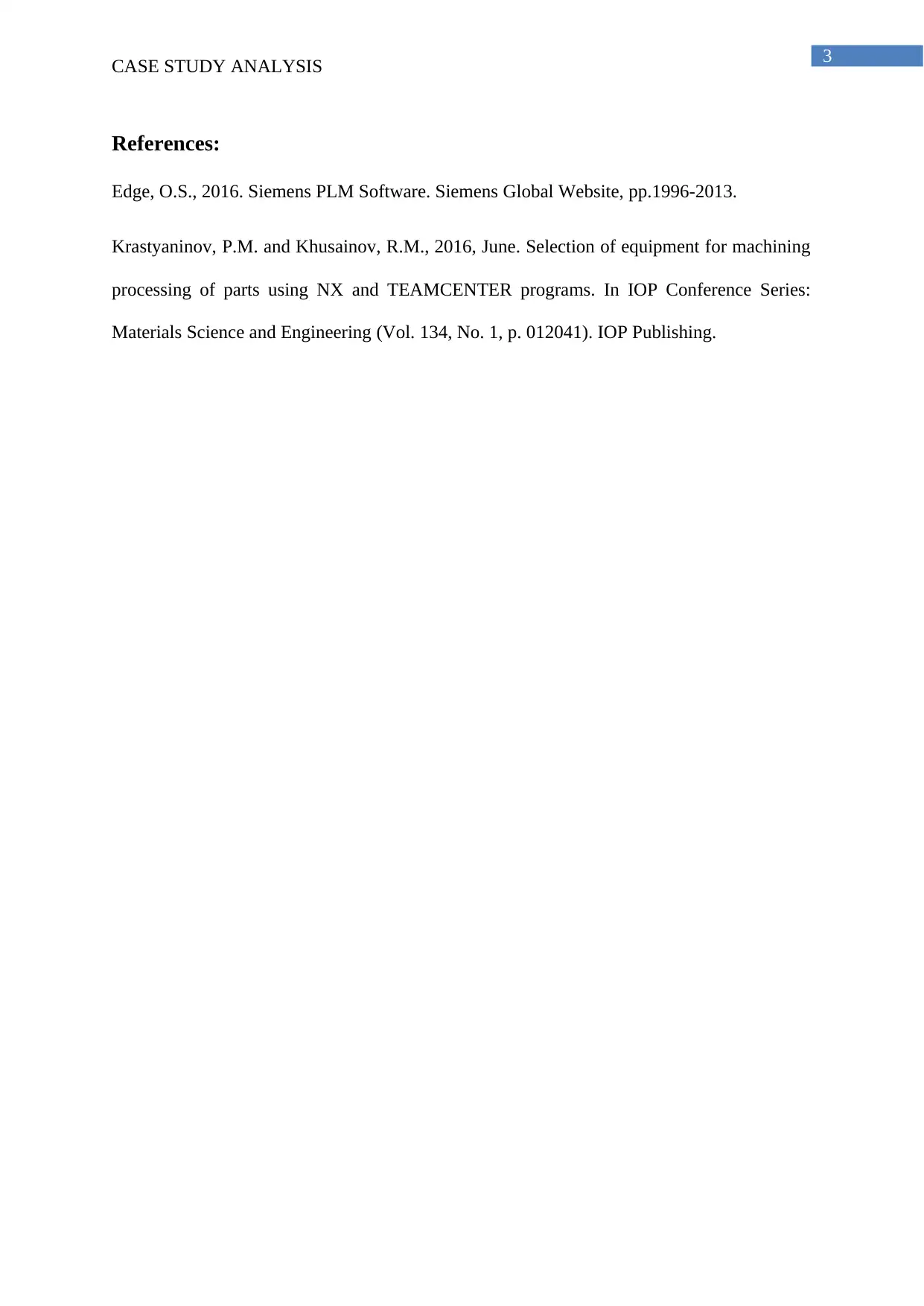Business Development: Case Study Analysis of Nissan's V-3P Program
VerifiedAdded on 2023/06/10
|4
|580
|78
Case Study
AI Summary
This case study analyzes Nissan's V-3P program, a system leveraging Siemens PLM Software to enhance product and process innovation. The analysis explores the program's goals, implementation, and impact on the company's performance. It examines the role of the Know-How-CAD system and the importance of employee feedback and training. The study also addresses the use of Teamcenter for record-keeping and the methods for measuring the system's effectiveness, including tracking product quality and user feedback. The case study underscores the significance of the V-3P program in bringing new vehicles to market faster and improving product quality within the automotive industry.
1 out of 4











![[object Object]](/_next/static/media/star-bottom.7253800d.svg)